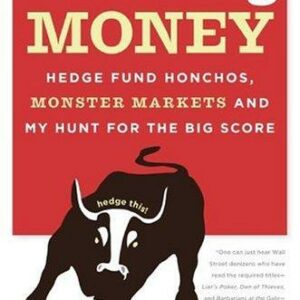Subtotal: $9.99
Devil Take the Hindmost
$20.00
| Title | Range | Discount |
|---|---|---|
| Trade Discount | 5 + | 25% |
- Description
- Additional information
Description
Description
A lively, original, and challenging history of stock market speculation from the 17th century to present day.
Is your investment in that new Internet stock a sign of stock market savvy or an act of peculiarly American speculative folly? How has the psychology of investing changed—and not changed—over the last five hundred years?
In Devil Take the Hindmost, Edward Chancellor traces the origins of the speculative spirit back to ancient Rome and chronicles its revival in the modern world: from the tulip scandal of 1630s Holland, to “stockjobbing” in London’s Exchange Alley, to the infamous South Sea Bubble of 1720, which prompted Sir Isaac Newton to comment, “I can calculate the motion of heavenly bodies, but not the madness of people.”
Here are brokers underwriting risks that included highway robbery and the “assurance of female chastity”; credit notes and lottery tickets circulating as money; wise and unwise investors from Alexander Pope and Benjamin Disraeli to Ivan Boesky and Hillary Rodham Clinton.
From the Gilded Age to the Roaring Twenties, from the nineteenth century railway mania to the crash of 1929, from junk bonds and the Japanese bubble economy to the day-traders of the Information Era, Devil Take the Hindmost tells a fascinating story of human dreams and folly through the ages.Preface: Devil Take the Hindmost
1. “This Bubble World”: The Origins of Financial Speculation
2. Stockjobbing in ‘Change Alley: The Projecting Age of the 1690s
3. “The Never-to-Be-Forgot or Forgiven South-Sea Scheme”
4. Fool’s Gold: The Emerging Markets of the 1820s
5. “A Ready Communication”: The Railway Mania of 1845
6. “Befooled, Bewitched and Bedeviled”: Speculation in the Gilded Age
7. The End of a New Era: The Crash of 1929 and Its Aftermath
8. Cowboy Capitalism: From Bretton Woods to Michael Milken
9. Kamikaze Capitalism: The Japanese Bubble Economy of the 1980s
Epilogue: The Case of the Rogue Economists
Notes
For Further Reference
Acknowledgments
Index
Praise for Devil Take the Hindmost
“An admirably researched and very well written account of speculative insanity from the earliest times to, let no one doubt, the present. Anyone contemplating a stock market venture and certainly anyone now involved should read this book.”—John Kenneth Galbraith
“The greatest hits of financial silliness recounted coherently and…gracefully…Chancellor does a fine job of capturing the atmosphere of the times.”—Forbes magazine
“Entertaining, useful, admirable scholarship…Chancellor seems to have read everything.”—The New York Times Book Review
“The subtle ways in which individual investors become drawn into crowd behavior is a much studied phenomenon, covered brilliantly…in the book Devil Take the Hindmost.”—The Daily Telegraph (London)
“The South Sea Company is one of the great bubble and crash stories. Many books have referred to it. One of the finest is Devil Take the Hindmost.”—Debashis Basu, Money Life
“Excellent.”—City A.M.
“[An] essential history of financial manias.”—The ObserverEdward Chancellor studied history in Great Britain at both Cambridge and Oxford Universities. In the early 1990s he worked for the investment bank Lazard Brothers. He is a freelance journalist, and lives in London.US
Additional information
Additional information
| Weight | 13.2 oz |
|---|---|
| Dimensions | 0.8000 × 6.0000 × 9.0000 in |
| Imprint | |
| ISBN-13 | |
| Author | |
| Audience | |
| BISAC | |
| Subjects | short selling stocks, investment, banking, business books, stock market crash, financial history, stock market books, stock market investing for beginners, economic history, credit, BUS069030, short selling, BUS036020, stock market investing, financial speculation, edward chancellor, speculation, history of stock market, financial times, political science, philosophy, psychology, business, economics, economist, finance, stock market, investing, history, capitalism, economy, history books, biographies, strategy, americana, money, social science |
| Format |












